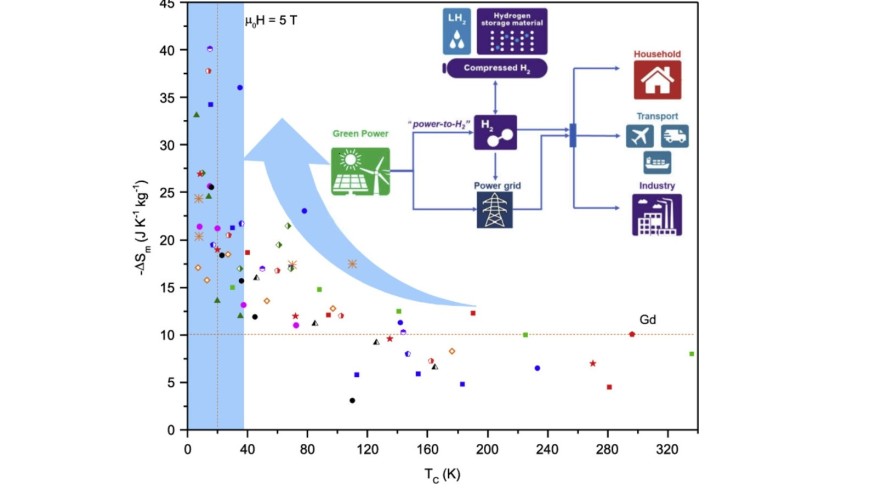A study on rare-earth Laves phases for magnetocaloric liquefaction of hydrogen
New publication
2022/09/12

W. Liu, E. Bykov, S. Taskaev, M. Bogush, V. Khovaylo, N. Fortunato, A. Aubert, H. Zhang, T. Gottschall, J. Wosnitza, F. Scheibel, K. Skokov, O. Gutfleisch
Applied Materials Today, 29, 101624 (2022).
We are witnessing a great transition towards a society powered by renewable energies to meet the ever-stringent climate target. Hydrogen, as an energy carrier, will play a key role in building a climate-neutral society. Although liquid hydrogen is essential for hydrogen storage and transportation, liquefying hydrogen is costly with the conventional methods based on Joule-Thomas effect. As an emerging technology which is potentially more efficient, magnetocaloric hydrogen liquefaction can be a “game-changer”. In this work, we have investigated the rare-earth-based Laves phases RAl2 and RNi2 for magnetocaloric hydrogen liquefaction. We have noticed an unaddressed feature that the magnetocaloric effect of second-order magnetocaloric materials can become “giant” near the hydrogen boiling point. This feature indicates strong correlations, down to the boiling point of hydrogen, among the three important quantities of the magnetocaloric effect.



